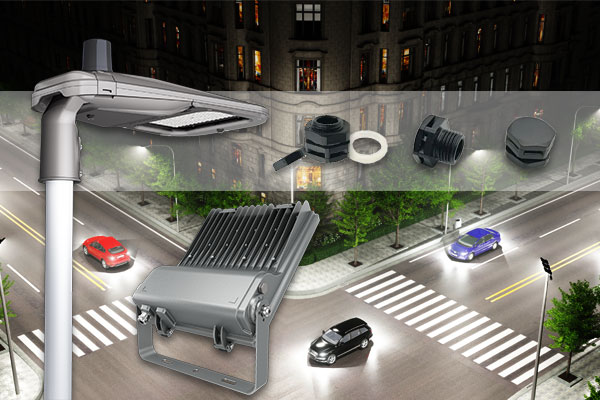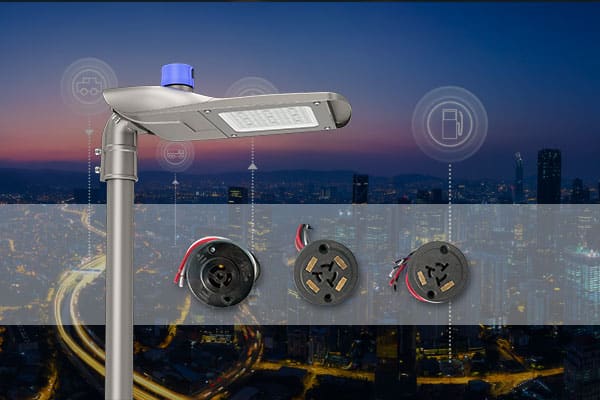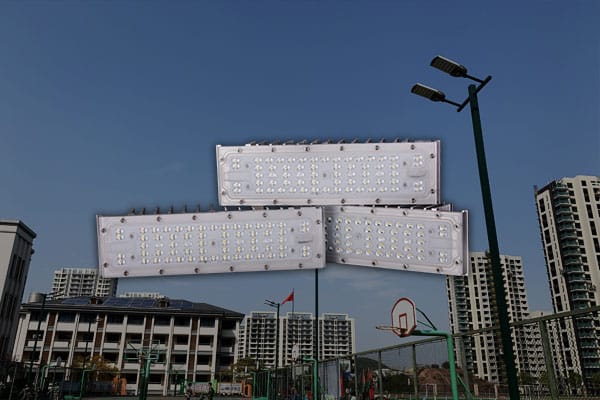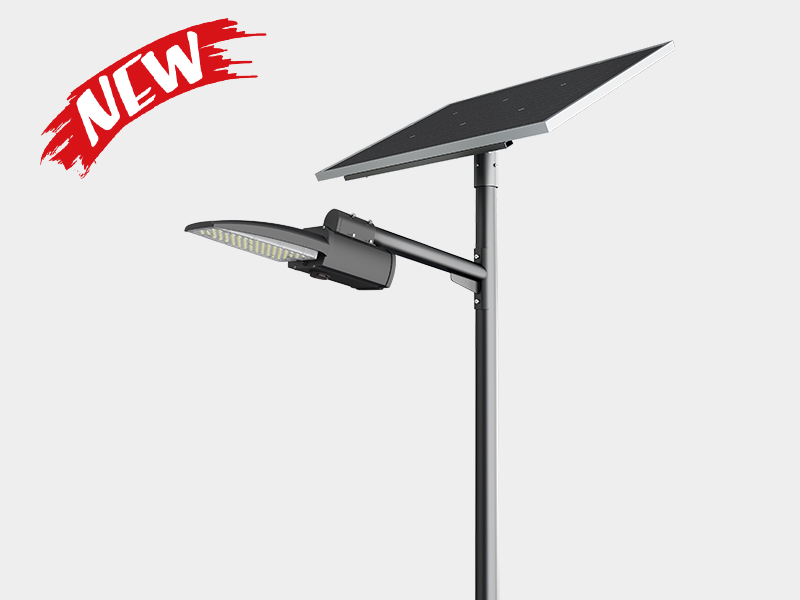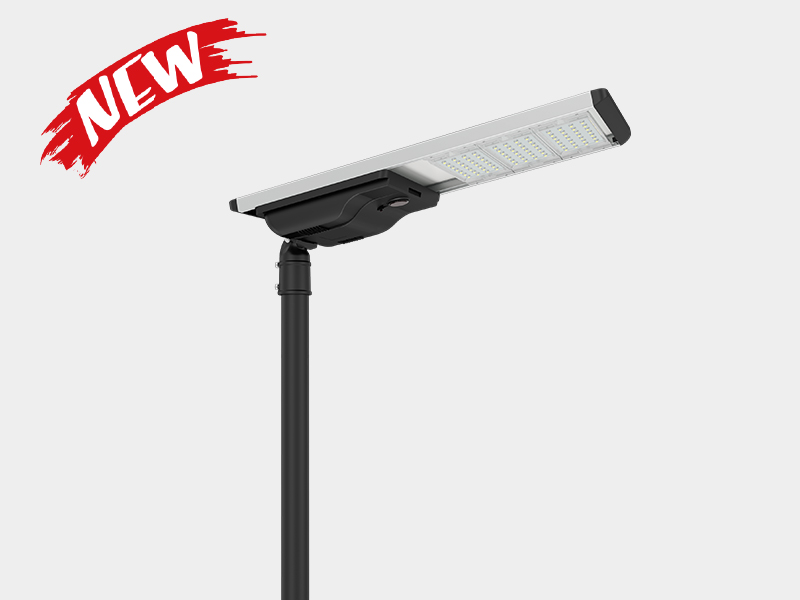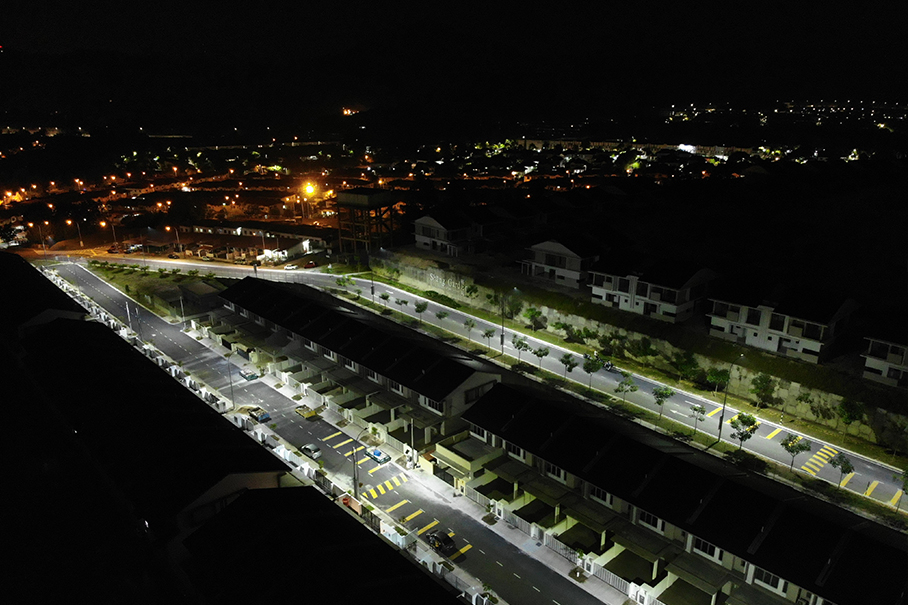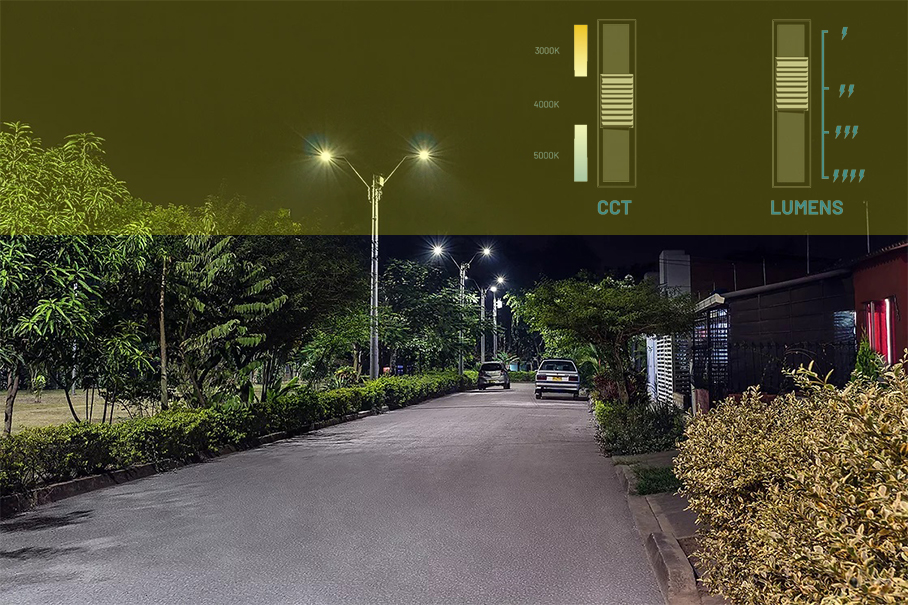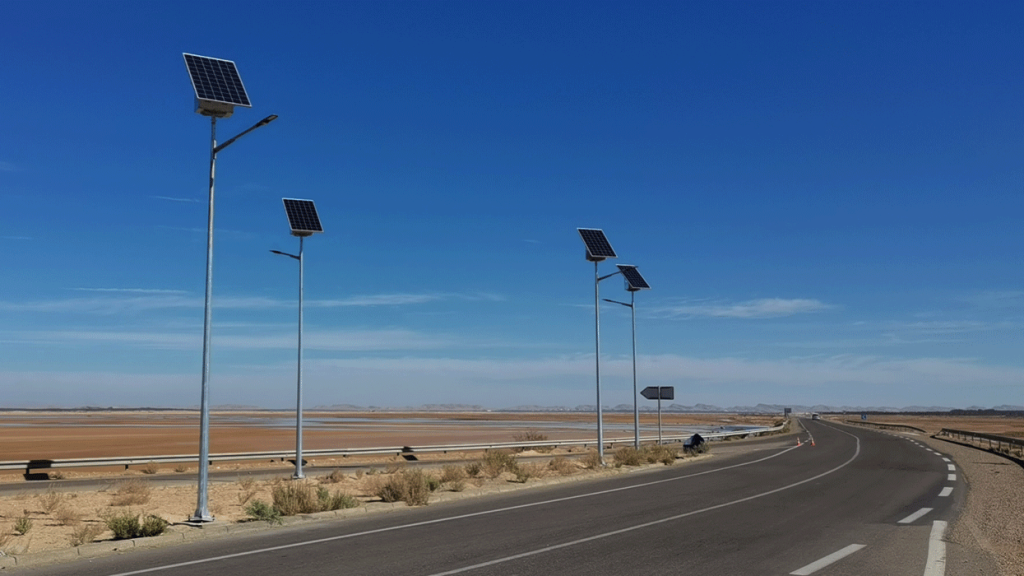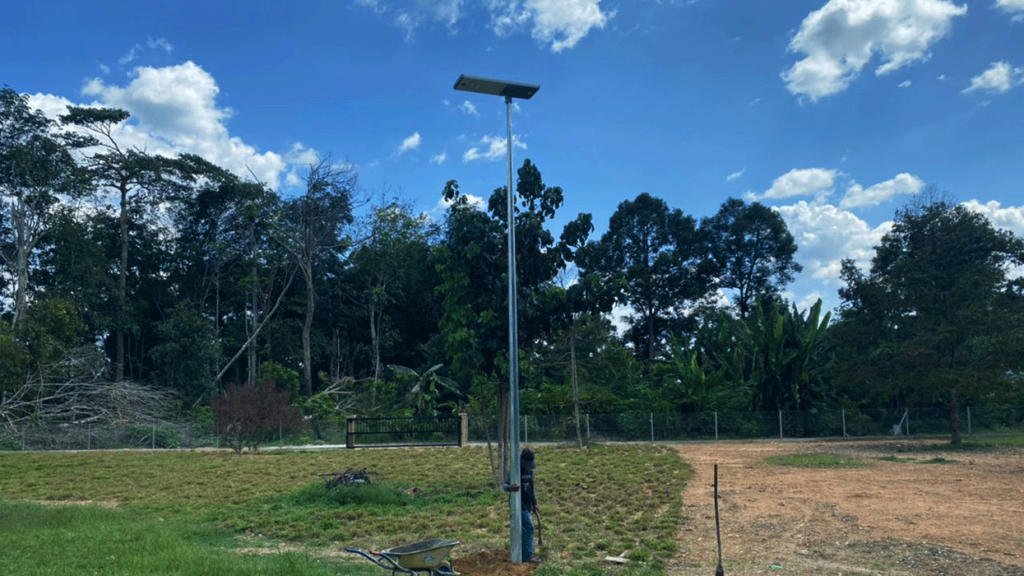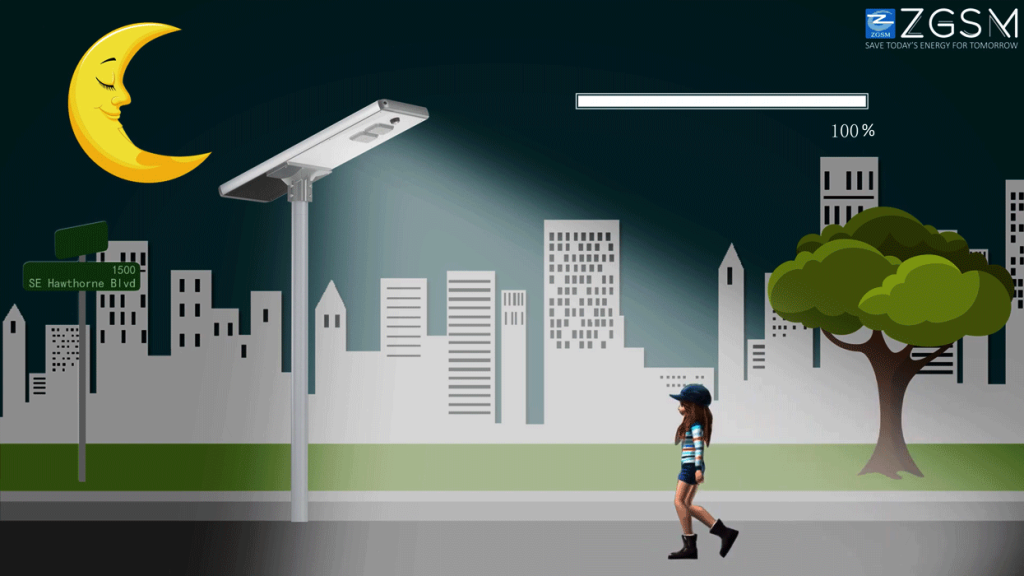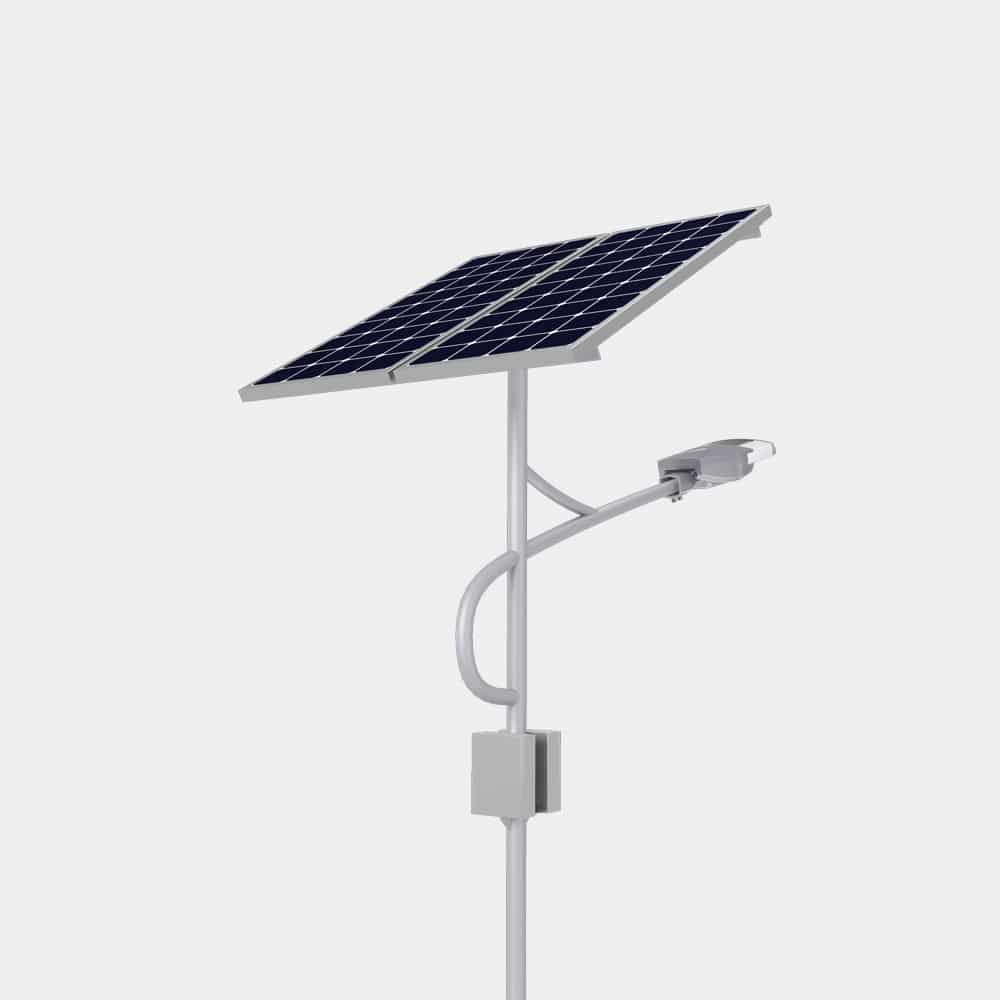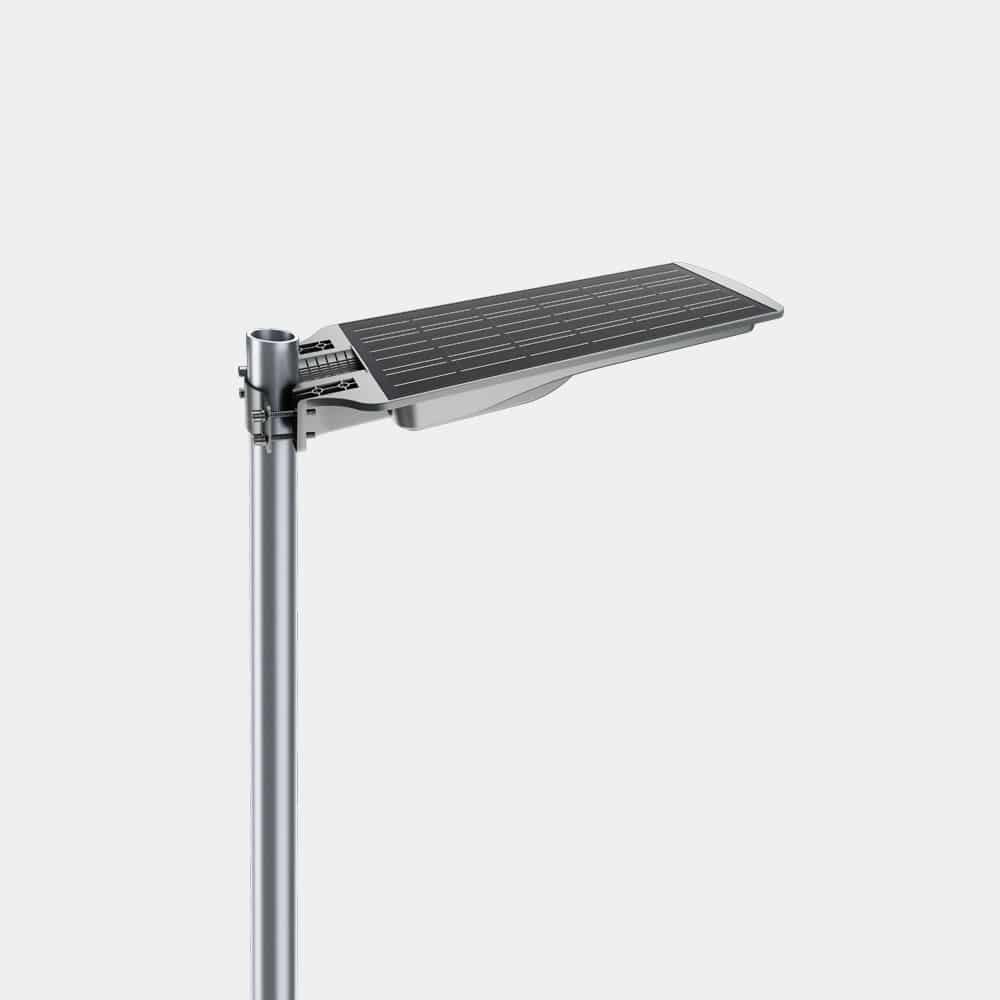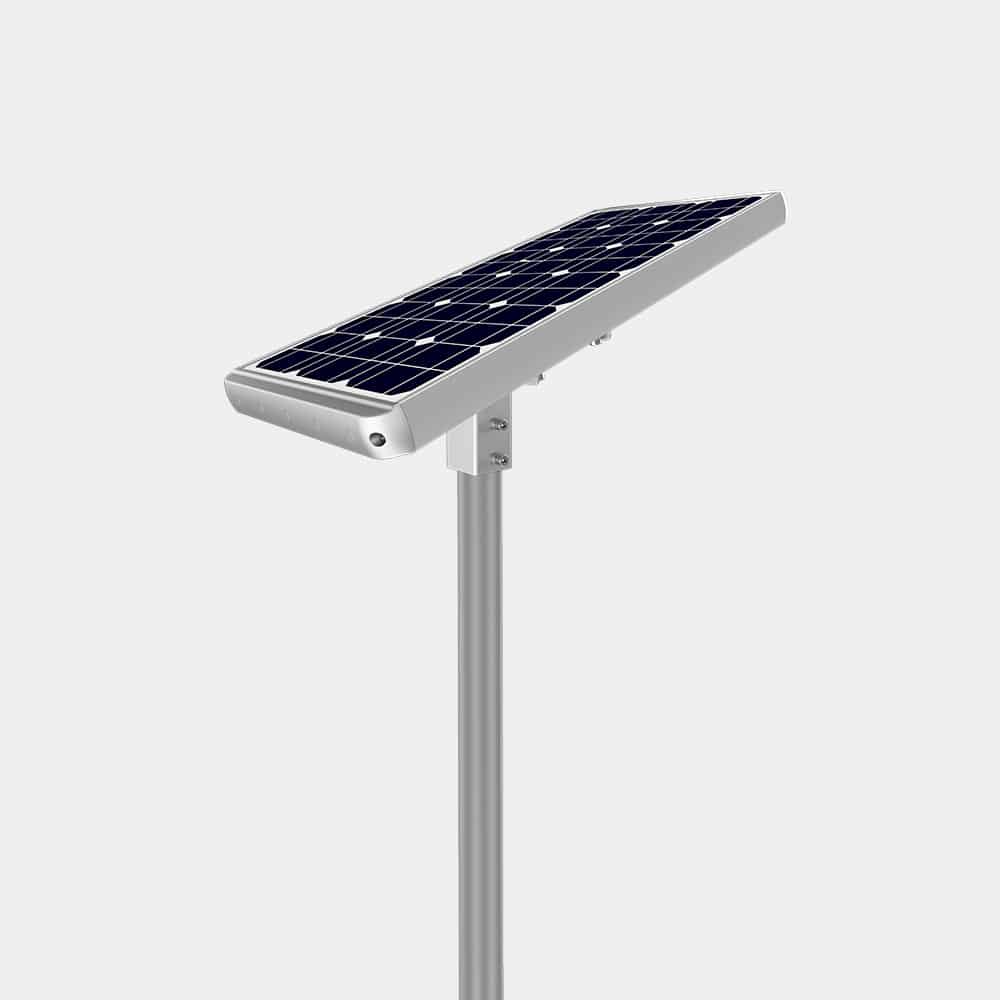Ultimate Guide to Typical Solar Powered Street Lights

William Yu
What is solar powered street lights?
Solar powered street lights are a type of lighting system that harnesses solar energy for power. We always called them solar powered street lights. They use solar panels to convert sunlight into electricity, which is then stored in batteries for nighttime illumination. Solar powered street lights typically consist of solar panels, batteries, LED lamps, and a controller.
They operate independently without the need for an external power source, offering advantages such as energy efficiency, environmental friendliness, easy installation, and low operational costs. Solar powered street lights are widely used in areas such as roads, neighborhoods, parks, and squares, providing safe lighting for people.
Where are solar street lights suitable?
Remote areas: In remote areas without access to electricity, solar powered street lights can provide illumination without relying on the traditional power grid.
Open areas requiring lighting: Locations such as parks, communities, and bridges where there are no trees obstructing sunlight can fully utilize solar energy, eliminating the need for trenching and reducing construction costs.
High solar insolation regions: Solar powered street lights rely on solar energy for power generation. High solar insolation levels indicate more abundant solar radiation, providing greater energy for charging the solar panels.
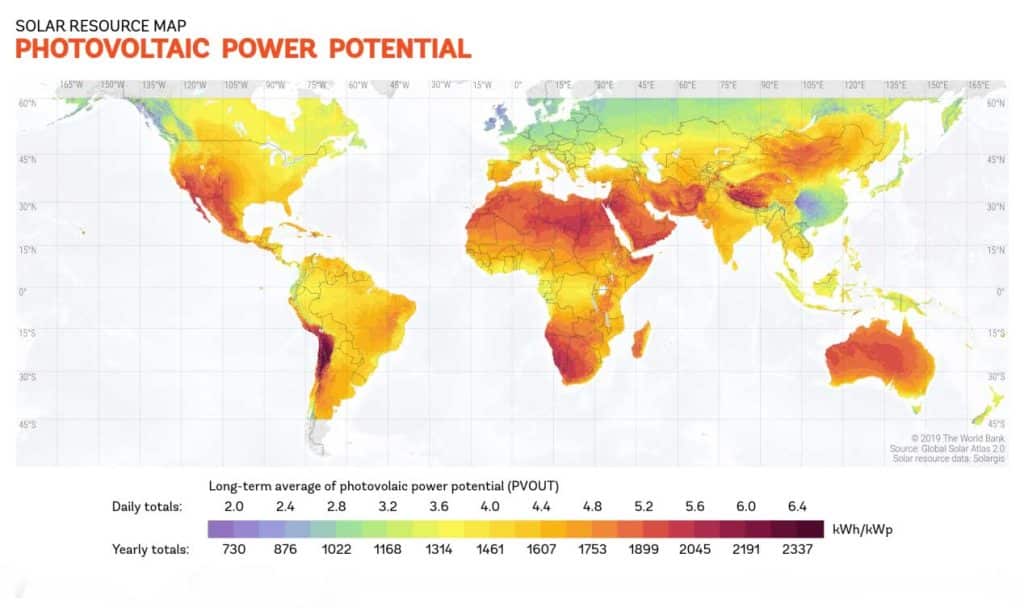
Components of solar street lights
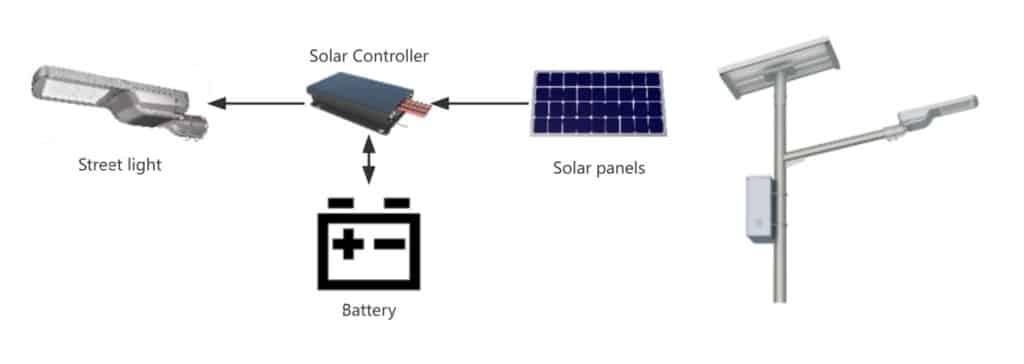
Solar Panel: The solar panel is the core component of a solar street light system, used to convert solar energy into electricity. It typically consists of multiple solar cells that generate direct current (DC) through the action of light. Solar panels are usually installed on the top or sides of the streetlight LED to maximize sunlight absorption.
Battery: Batteries are used to store the electricity generated by the solar panels, providing power during nighttime or low-light conditions. Common types of batteries include lead-acid batteries, lithium-ion batteries, etc. Batteries are typically installed at the bottom of the solar street light or strapped to the light pole.
Controller: The controller monitors and controls the charging and discharging process of the solar street light to ensure the system operates smoothly. It can monitor the battery’s charge status and protect the battery by controlling the charging and discharging process, thus extending its lifespan. The controller is usually installed inside the street light or together with the battery pack.
LED street light: The LED street light is the lighting component of the solar street light. LED street lights are known for being efficient, long-lasting, and energy-saving, providing bright illumination.
Pole and Bracket: The pole serves as the support structure for the solar street light, providing stable support to securely install the light on the ground, while also considering cable protection and concealment. These brackets are typically made of metal and are used to firmly mount the solar panel, battery, and LED lamp.
Cables and Connectors: Cables and connectors are used to connect components such as solar panels, batteries, controllers, and lighting fixtures to establish the electrical circuit and transmit electricity.
In addition to the main components mentioned above, solar powered street lights may also include other auxiliary components, such as infrared or microwave sensors (used to detect pedestrians or other slow-moving objects in the vicinity, enabling smart control), etc. The specific configuration and functionality of these components may vary based on different solar street light designs and application requirements.
How to choose a solar panel?
Power and Voltage: The power of a solar panel determines how much electricity it can generate, while voltage determines its compatibility with other components.
The formula for calculating the required solar panel power is as follows:
Solar Panel Power (W) = Street Light Power (W) × Operating time (h) ÷ Local Peak Sunlight Hours (h) × Loss Factor (1.2~1.5)
For example, in Beijing, China, a 100W solar street light is installed. The region has around 5 hours of sunlight, making it a relatively ideal area for solar energy applications. According to the calculation formula, the required solar panel power is: 100 (W) * 10 (h) ÷ 5 (h) × 1.3 = 260W.

Efficiency and Quality: The higher the efficiency of a solar panel, the more effectively it can convert sunlight into electricity. High-efficiency solar panels can generate more electricity, thus improving the lighting effectiveness of solar street lights. Take a 150W monocrystalline panel as an example, it can achieve a conversion efficiency of over 20%.
Based on estimates, its degradation can be maintained at around 80% of the initial efficiency over a 20-year period, while top-tier manufacturers can even achieve 85% after 30 years of use. However, it’s important to note that high quality often comes with a higher price tag. For solar powered street lights, products meeting the required standards are already good enough, considering the typical lifespan of the entire solar street light system is around 5-10 years.
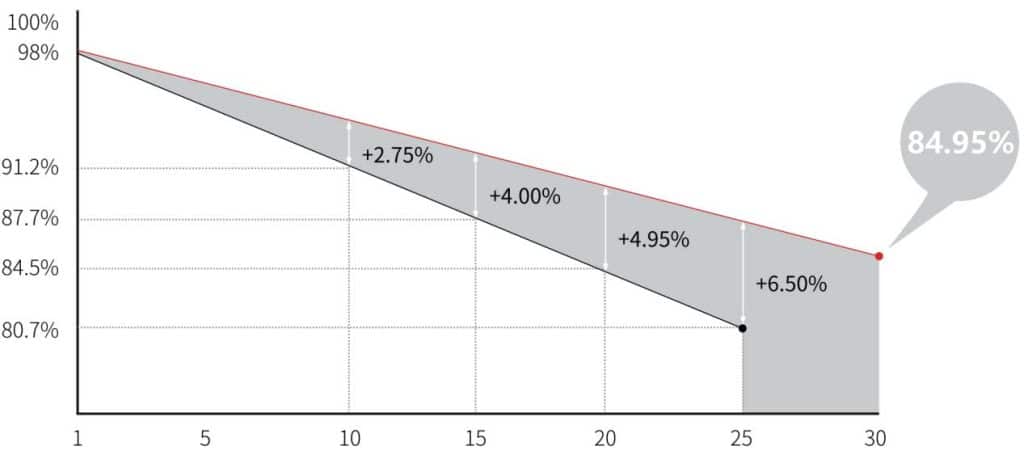
Size and Weight: Choose solar panels with appropriate size and weight based on the installation space and load requirements of the solar street light. The dimensions and weight of the solar panel should be suitable for installation on the light pole, without imposing an excessive load on the pole.
How to choose solar controller?
Functions and Features: Choose a controller with the required functions and features based on actual needs. Common functions include light control, time control, temperature compensation, battery protection, etc. The light control function can automatically adjust the light brightness based on the intensity of sunlight, the time control function can set the on/off time of the solar powered street light.
The temperature compensation function can adjust the battery’s charge and discharge parameters based on environmental temperature, and the battery protection function can safeguard the battery from issues like overcharging, over-discharging, short circuits, etc.
Input and Output Voltage: Select the controller’s input and output voltage range based on the voltage requirements of the solar panels and lighting fixtures. Ensure the controller can match the voltage needs of the solar panels and solar powered street light. You can find corresponding parameters in the controller’s specifications.
Maximum Load and Power: The controller’s maximum load and power determine the number of lighting fixtures and their power that it can control. Choose a controller with a maximum load and power suitable for your actual requirements.
Communication Interface: Some advanced controllers may have communication interfaces such as WiFi, microwave, infrared, Bluetooth, ZigBee, LoRa, etc., which can enable remote monitoring and automatic adjustment. Depending on actual needs, decide whether these communication interfaces are necessary.
How to choose battery?
Battery Capacity: The capacity of the battery determines the amount of energy it can store, and choosing the appropriate capacity ensures that the solar street light can provide continuous power during the night. Generally, a larger capacity results in a longer operating time for the solar street light. The selection of battery capacity should be based on the actual needs and the power of the solar street light.
The capacity calculation is as follows: Battery Capacity (Wh) = Load Power (W) * Operating Time (h) / Depth of Discharge (0.8) * Rainy Days + 1; For example, a 100W street light works for 10 hours each night and needs to ensure power for 2 rainy days. The required battery capacity = 100 * 10 / 0.8 * 3 = 3750 Wh.
Relationship between Wh and Ah: WH = Charge (Ah) * Battery Voltage (V). For example, the voltage of a lithium iron phosphate battery is typically 12.8V, so the charge for 3750Wh is: 3750 ÷ 12.8 = 292.97 Ah. In this case, we would typically provide a 300Ah 12.8V battery or use two 150Ah 12.8V batteries in parallel.
It’s important to note that any formula applies under ideal conditions, and actual usage may be influenced by factors such as energy conversion losses, so the actual energy output may be slightly lower than the theoretical value.
Battery Types: Common types of batteries for solar street lights include lead-acid batteries, ternary lithium-ion batteries, and lithium iron phosphate batteries. Different battery types have different characteristics and suitable environments. The selection of the appropriate battery type should be based on the actual situation.
Here is a performance comparison of the three common types of batteries. Remember that different batteries have varying depth of discharge, so it’s essential to use appropriate values when calculating battery capacity (for example, for lead-acid batteries, a value of 0.7 should be used).
| Item | Lead-acid batteries | Ternary lithium-ion batteries | LiFePO4 battery |
| Energy Density | 40Wh/kg | 210Wh/kg | 160Wh/kg |
| Depth of Discharge | 70% | 80% | 80% |
| Lifespan / Cycle Count | ≈300次 | ≈1200次 | ≈2000次 |
| Operation temperature | 10-50℃ | 0-40℃ | 0-45℃ |
| High temperature performance | Not resistant to high temperature | High temperature resistance | Much better high temperature performance |
| Low temperature performance | Not resistant to low temperature | Much better low temperature performance | Low temperature resistance |
Energy Density: Energy density refers to the amount of energy stored per unit volume or unit mass of a battery. It is typically expressed in units of Wh/L or Wh/kg. A higher energy density means the battery can store more energy in the same volume or mass. Energy density is a key metric for evaluating battery performance.
Depth of Discharge (DOD): Depth of discharge is the ratio of the discharged capacity to the total capacity of the battery during its usage. It is usually expressed as a percentage, for example, 80% depth of discharge means 80% of the total capacity has been consumed during discharge. Depth of discharge can be used to measure battery usage and lifespan.
Generally, a larger depth of discharge leads to a shorter battery lifespan. Therefore, it's important to control the depth of discharge based on battery specifications and recommendations to protect its lifespan and performance.
Lifespan / Cycle Count: Cycle count refers to the number of times a battery can be used in charge and discharge cycles. Each complete charge and discharge cycle is counted as one cycle. For example, if a battery has a cycle count of 500, it can undergo 500 full charge and discharge cycles before it might experience reduced performance or capacity degradation.
How to choose a street light?
High luminous efficiency; the higher the luminous efficiency of the solar street light, the less energy it can use under the same lighting effect. In the application of solar street lamps, the cost of batteries accounts for a very high proportion of the entire system, and the application of high-efficiency LED street lamps has greatly reduced the cost of batteries.
According to the calculation formula mentioned in previous section.
Battery capacity (WH) = street light power (w) × working time (h) / discharge depth (0.8)
Solar panel power (W) = street lamp power (w) × time (h) ÷ local peak sunshine hours (h) × loss factor (1.2~1.5)
For example, the local effective sunshine time is 5 hours, and the work is 10 hours a day. In the table below, we give a comparison of solar street light system configurations between ordinary street lights with a luminous flux of 10000lm (100W, 100lm/W) and ZGSM high-efficiency street lights (67W, 150lm/W).
It can be seen that improving the light efficiency of street lamps can significantly reduce the configuration of the system and thus reduce the cost of procurement and transportation.
| LED street light | Battery | Solar street light |
| Standard 100W(100lm/W) | 100(w)*10(h)/0.8=1250WH | 100(w)*10(h)/5(h)*1.3=260W |
| ZGSM 67W(150lm/W) | 67(w)*10(h)/0.8=837.5WH | 67(w)*10(h)/5(h)*1.3=175W |
Independent driver compartment: easy to install and protect controllers and sensors, such as WIFI, microwave, infrared, Bluetooth, ZigBee, LoRa, etc. But some manufacturers will also install the battery inside the lamp, which is very dangerous! Because the battery releases heat during charging and discharging, and the interior of the lamp is a closed space, the inability to release the heat of the battery will reduce performance, and even cause swelling and burning.
How to choose pole for solar powered street light?
| Material | Advantages | Disadvantages |
| Wooden | Easily available, easy to install, light and non-conductive. | It is not fire-resistant, perishable, and is eaten by insects, so its lifespan is not long. |
| Aluminium alloy | Light weight, high strength, excellent corrosion resistance and long service life. | Not fire resistant, conductive, expensive. |
| Concrete | Strong, corrosion-resistant, fire-resistant, and non-conductive. | Very heavy and difficult to handle and install. |
| Fiberglass | Very light, strong, corrosion resistant and long life. | Very expensive |
| Steel | Durable and cheap | Not corrosion resistant (But it can be solved after hot-dip galvanizing) |
Material: We generally recommend using Q235 material for the lamp post, which combines high strength and cost-effectiveness. If the client's usage is in a corrosive environment, such as chemical plants or coastal areas, adding hot-dip galvanization significantly improves its corrosion resistance.
Design and Style: Choose lamp post designs and colors that harmonize with the surrounding environment to enhance the aesthetic appeal of the solar street lights. Additionally, consider the lamp post's adaptability to different cultures and environmental requirements.
Installation Method and Stability: Special attention should be paid to the reliability of the solar panel mounting bracket during the installation of solar street lights. Choose the appropriate lamp post type and installation method to ensure the solar powered street lights can be securely installed on the lamp post and withstand external forces such as wind.
How to ensure the security of the solar street lighting system?
The batteries must be certified with MSDS and UN38.3 to ensure safety.
Battery packs must be equipped with protective circuits to prevent issues such as overcharging, over-discharging, and short circuits.
During installation, they should be placed in areas far from heat sources and protected from potential collisions, such as being buried underground or under the solar panels.
Solar panels need to be certified with IEC 61215 and IEC 61730 or relevant standards. The screws used for installation should be robust and secure.
The controller should be kept away from heat sources, and whenever possible, it is recommended to install the controller inside the luminaire. The only exception might be if the system has very small batteries and the luminaire lacks a suitable compartment for the driver.
The preferred material for the lamp head casing is aluminum alloy, with a protection rating of IP65, IK08, or higher.
The lamp post should undergo wind resistance calculations and be manufactured according to the design drawings. During installation, it must strictly follow the blueprint, especially for cases where a foundation is being pre-buried, which should be done thoroughly.
Installation and commissioning of solar street lights
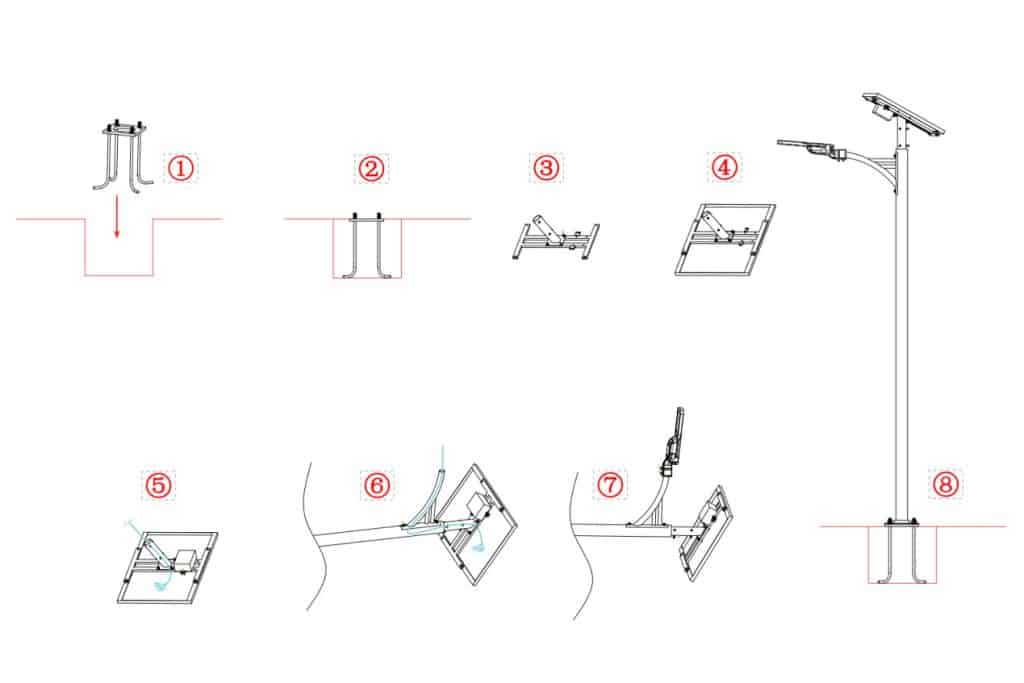
- Assemble the embedded parts, dig a hole on the ground, pay attention to the length, width and depth of the hole need to meet the size we provide.
- Put the embedded parts into the dug pit and pour in the concrete. Note that the thread of the embedded part is exposed.
- Fix the connection sleeve between the solar panel and the light pole directly.
- Fix the solar panel to the bracket.
- Fix the battery and pass the cable through the connecting sleeve.
- Put the cable in the dumped state, and install the street lamp arm and solar panel.
- Install street lights and turn the solar panels to the direction with more sunshine.
- Stand up the light pole and fix it to the foundation.
The debugging work has been completed in the factory, and the solar powered street lights can only be turned on for about an hour on the day of installation, because the battery is low. Just wait for 2-3 sunny days to start working. It should be noted that the customer needs to install the product as soon as possible after receiving the product. If the battery is placed for too long, it will enter the low power protection state and need to be reactivated.
Typical solar powered street lighting solutions provided by ZGSM
2021 Greek customer street lighting project, requirements: 20W solar powered street lights, 3.5m seamless light pole, infrared sensor, time-based dimming, light control + mobile phone Bluetooth remote control, 3 rainy days, working 14 hours a day.
According to the calculation formula mentioned above, we can easily conclude that the configuration customer needs is:
ZGSM-ST17-20S street light built-in controller (Bluetooth communication + air sensor)
Monocrystalline solar panel 80W/18V
Lithium iron phosphate battery 54AH/12.8V
3.5m single-fork solar street light pole with hot-dip galvanized and plastic-sprayed surface
The wiring is 3 meters, 4 core wires and 1.5 square meters of RVV wires
After installation, the project has been running smoothly so far without any failures for 2 years till now.
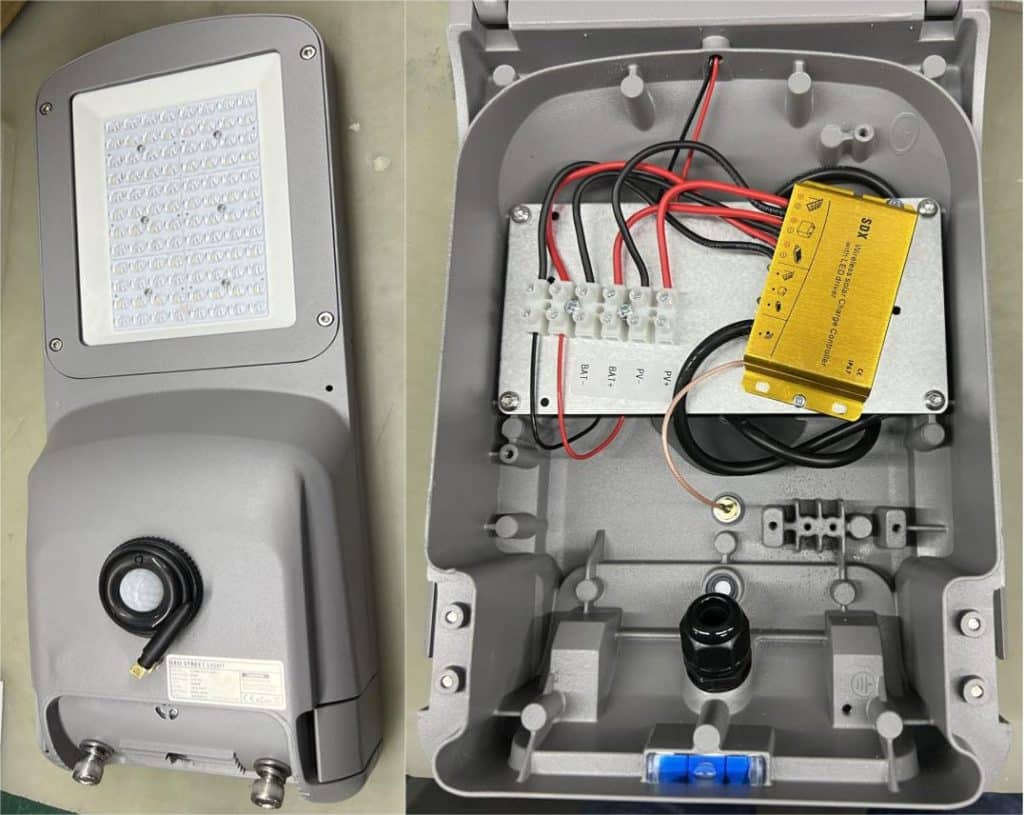
Projects of solar powered street lights

Project location: Ecuador
Project time: 2015
Project details:
1x 100W Solar Street Light, Model: ZGSM-LD100H/DC24V, 5700K, Pole height=11m
2x 175W Mono Solar panels/DC37V
2x 200AH Lead-acid battery/ DC12V
1x 20A/DC24V solar controller
Total 53 sets.
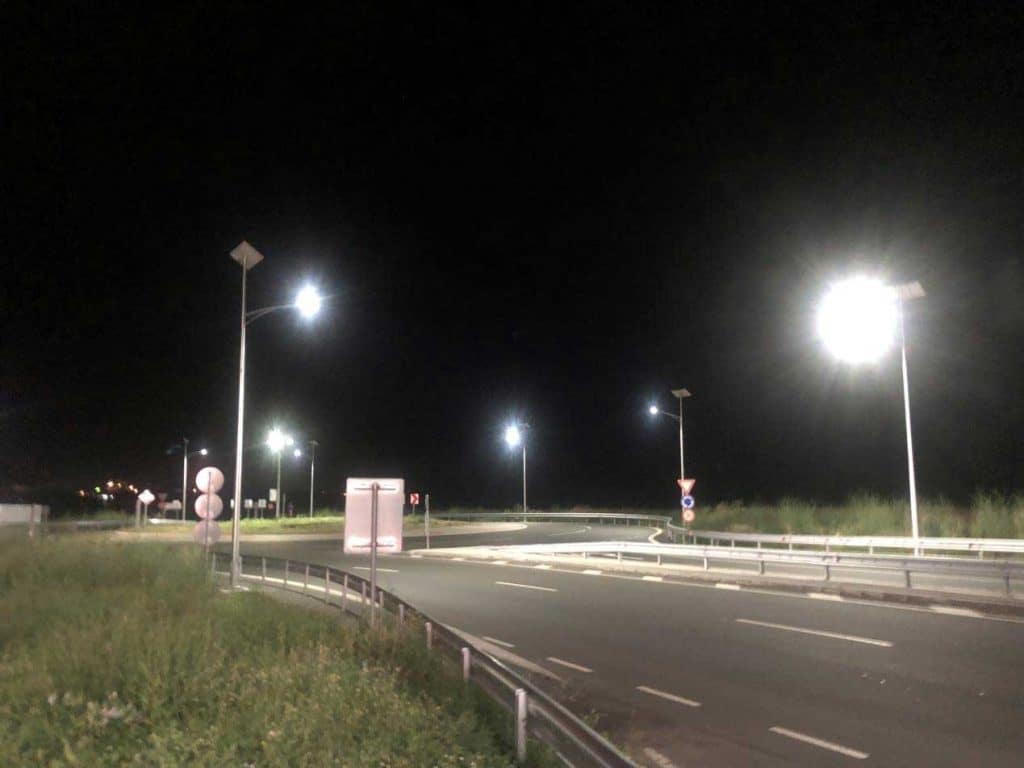
Country: Bugaria
Product: RIFLE solar street light
Qty: 22 units
44W LED street light 24VDC Rifle ZGSM‐ST17‐40S, 3030 LED, 5700K, Optic T353003
Summary
This article summarizes the advantages and applications of solar powered street lights and several important measures to ensure the safety of solar street light systems. The author focuses on the components of a typical solar street light, systematically explains the calculation method of each component, and the points that need attention for each component.
At present, in the civilian field, self-proclaimed 1000W/2000W street lighting or flood lighting systems abound, but in fact their products are only 10W, 20W, and cheap materials, recycled batteries make these products often have a short lifespan or even spontaneous combustion. , which is very dangerous and causes too much annoyance to the user. I hope readers can have a basic judgment on the actual effect of solar street lights from the calculation formula in this article.
ZGSM hopes to be your partner in sustainable lighting solutions, bringing you advantages such as energy saving, environmental protection, flexible installation and maintenance, and reliable lighting performance. By taking appropriate safety measures, the solar street lighting system can provide safe and reliable lighting services and create a better nighttime traffic environment for users.
Related Posts
The Benefits of Vents in Outdoor Lighting Fixtures
What Is 3 Pin, 5 Pin & 7 Pin NEMA Socket And How to choose them?
Why choose modular led lights for the lighting solution?
Author

William Yu
Sales Engineer
Hi. I'm Willian Yu. I have been working in the sales department of ZGSM company for 13 years, specializing in street lighting projects. My expertise includes lighting simulation, project design, and certification consulting.
